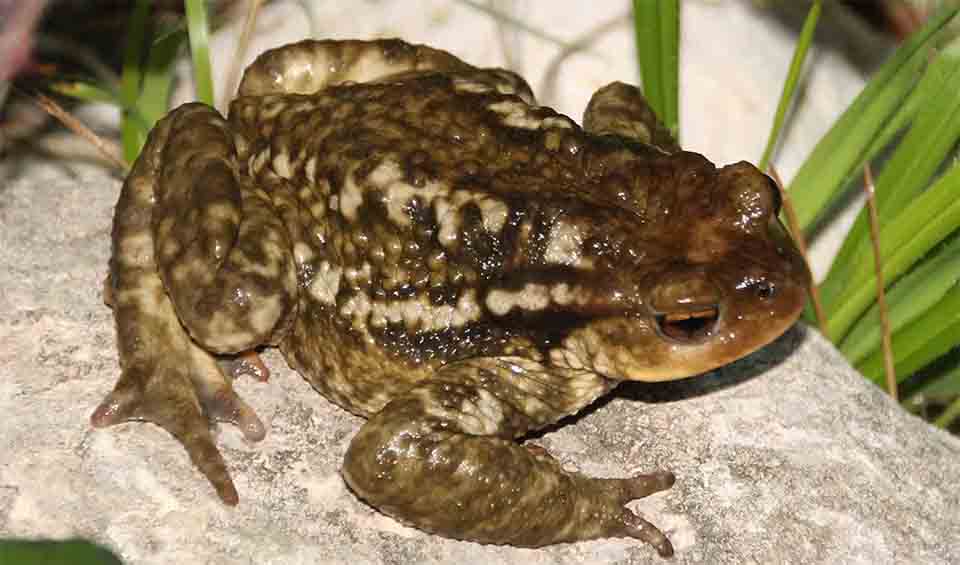One of the key characteristics that sets the Spiny toad apart from other toads is its textured skin, which is covered in small, spiny projections. These spines give the toad a formidable appearance and serve as a defense mechanism against predators, making it less palatable to would-be attackers.
Spiny toads are typically robust and stout, with a body that is well-suited to their predominantly terrestrial lifestyle. They vary in color, usually displaying hues that blend with their natural surroundings—browns, grays, and greens are common. This camouflage is crucial as it helps them avoid predators while they forage for food on the forest floor or in grassy fields.
These toads are predominantly nocturnal, coming out at night to feed on a diet of insects, worms, and other small invertebrates. Their feeding habits are beneficial to humans as they help control pest populations naturally. Spiny Toads have a unique hunting strategy; they use their sticky tongues to snatch prey quickly, consuming enough to sustain their slow metabolism.
Breeding for spiny toads occurs in water, where the female lays thousands of eggs that are then fertilized externally by the male. This usually happens during the rainy season when temporary ponds and pools form, providing the perfect environment for their tadpoles. The tadpoles are aquatic and undergo a significant transformation as they develop into adult toads, a process known as metamorphosis, which sees them lose their gills and develop lungs for breathing air.
A particularly interesting behavior of the spiny toad is its defensive posture. When threatened, the toad can inflate its body to appear larger and more daunting to potential predators. Combined with its spiny skin, the toad is a less appealing target. Moreover, like many toads, the spiny toad can secrete a mild toxin from glands in its skin. This secretion can irritate the mouths and eyes of predators, providing another layer of defense.
Distribution
 Algeria
Algeria Andorra
Andorra France
France Gibraltar
Gibraltar Jersey
Jersey Morocco
Morocco Portugal
Portugal Spain
Spain Tunisia
TunisiaAnything we've missed?
Help us improve this page by suggesting edits. Glory never dies!
Suggest an editGet to know me
Terrestrial / Aquatic
Altricial / Precocial
Polygamous / Monogamous
Dimorphic (size) / Monomorphic
Active: Diurnal / Nocturnal
Social behavior: Solitary / Pack / Herd
Diet: Carnivore / Herbivore / Omnivore / Piscivorous / Insectivore
Migratory: Yes / No
Domesticated: Yes / No
Dangerous: Yes / No




